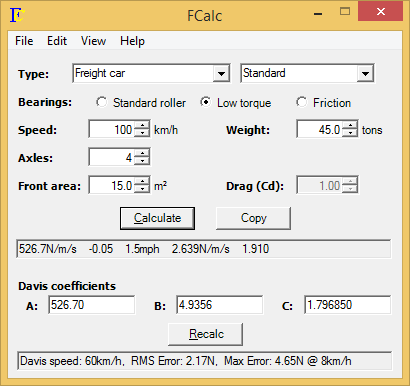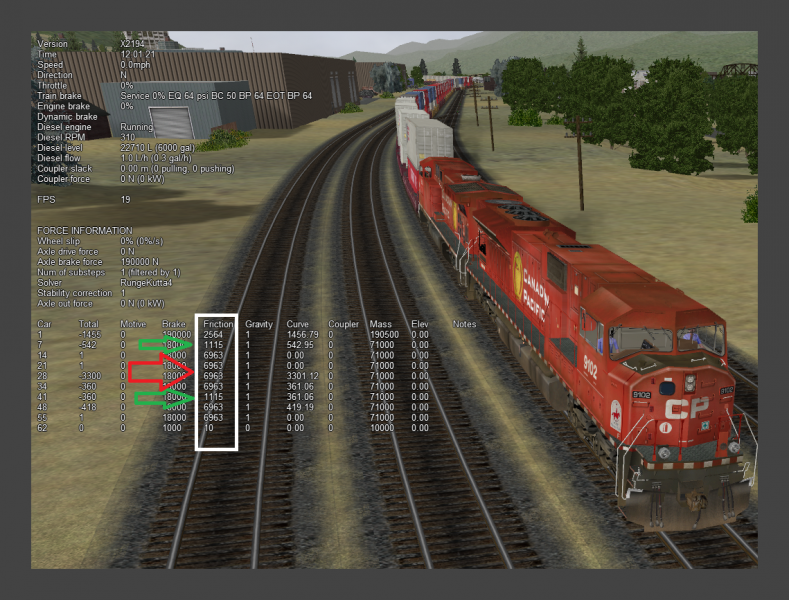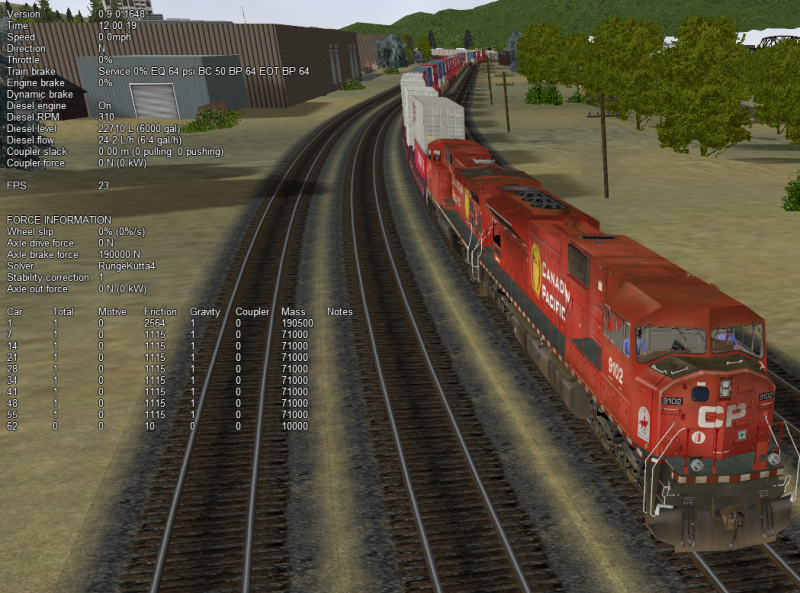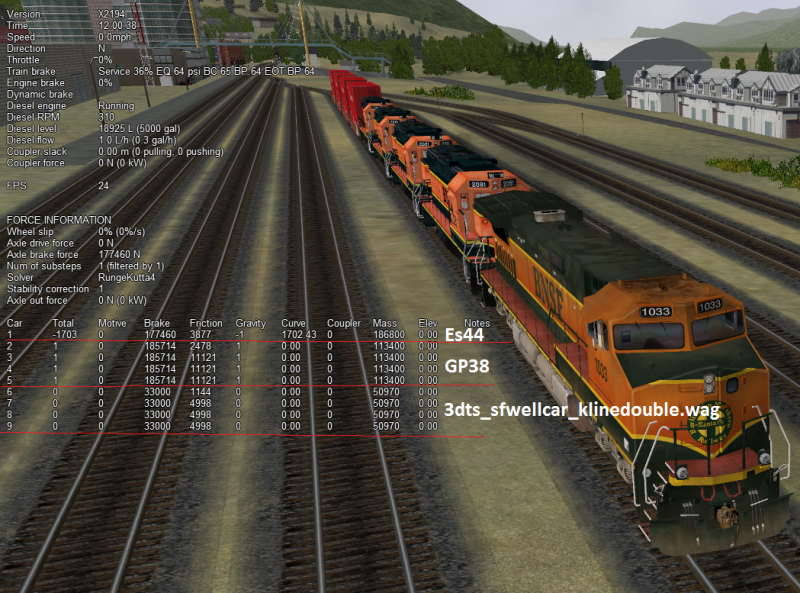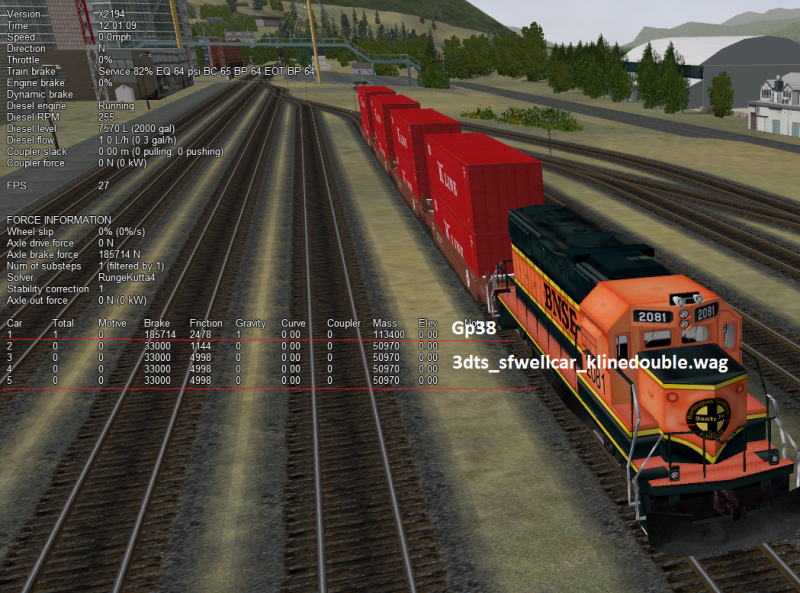 copperpen, on 25 April 2014 - 02:00 PM, said:
copperpen, on 25 April 2014 - 02:00 PM, said:
I have never questioned that, moreover this is the primary reason I am proposing we could do it, at least for the "C" formula's leading/trailing property, better by multiplying it directly in OpenRails.
 copperpen, on 25 April 2014 - 02:00 PM, said:
copperpen, on 25 April 2014 - 02:00 PM, said:
I'm not telling you should give up the fine-tuning. I'm just telling the ORTSDavis method is not for general use, we must develop a more automatic calculation, even if it will be at first a bit worse than the fine-tuned ORTSDavis method, while still be much better than the original MSTS way. Also we must forget about advertising a usage of a 3rd-party program to find out essential values of simulation, while it is perfectly possible to do the calculation ourselves too. I understand that the current state is enough for you, which is fine, and I fully appreciate the work you did in integrating the Davis formula into friction calculation. But it is not enough for OpenRails, we have to move on, to make this intermediate step of calculating A-B-C factors unnecessary for the "more simple" players and content developers.
 steamer_ctn, on 25 April 2014 - 10:36 PM, said:
steamer_ctn, on 25 April 2014 - 10:36 PM, said:
ii) As you have rightly suggested some means of distinguishing between the different vehicles types would be needed. - it would also be necessary to distinguish between different types of freight cars
iii) Is PassengerCapacity() parameter used universally in definition of railcars? If not, it could lead to misrepresentation of some railcars.
iv) As you have suggested some thought will need to be given to the variation of C factor in different circumstances.
I) We don't need to combine them. There are only max. 4-5 equations for each factor. And as a first step we don't need to cover everything to the finest details. Calculating A-B-C automatically will still be better than the original MSTS-style friction calculation.
II) Yes, I agree, we should add a wag option for this in the future. It is better asking players/content developers to define car type than asking to define ORTSDavis values.
III) It is used for the standard stock, but it cannot be guaranteed it is used for all community addons, of course. In this case it will lead to misinterpretation, yes. We have to ask from the players/content developers to add it if missing, and it is still better than asking to add ORTSDavis values.
By calculating ABC values automatically we don't exclude any possibility of using a different form of Davis equation, I think. And further research is always appreciated! :)

 Log In
Log In Register Now!
Register Now! Help
Help







